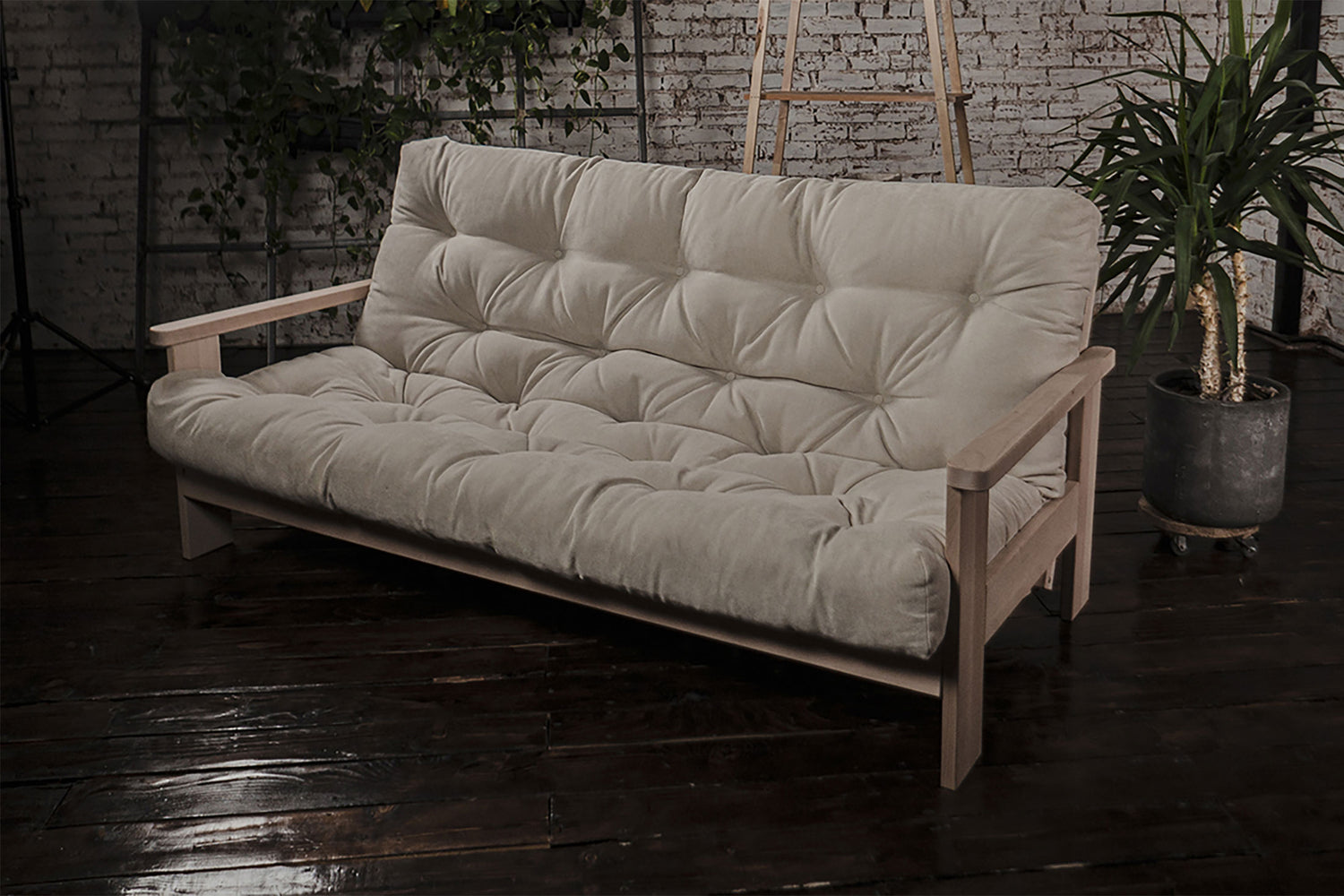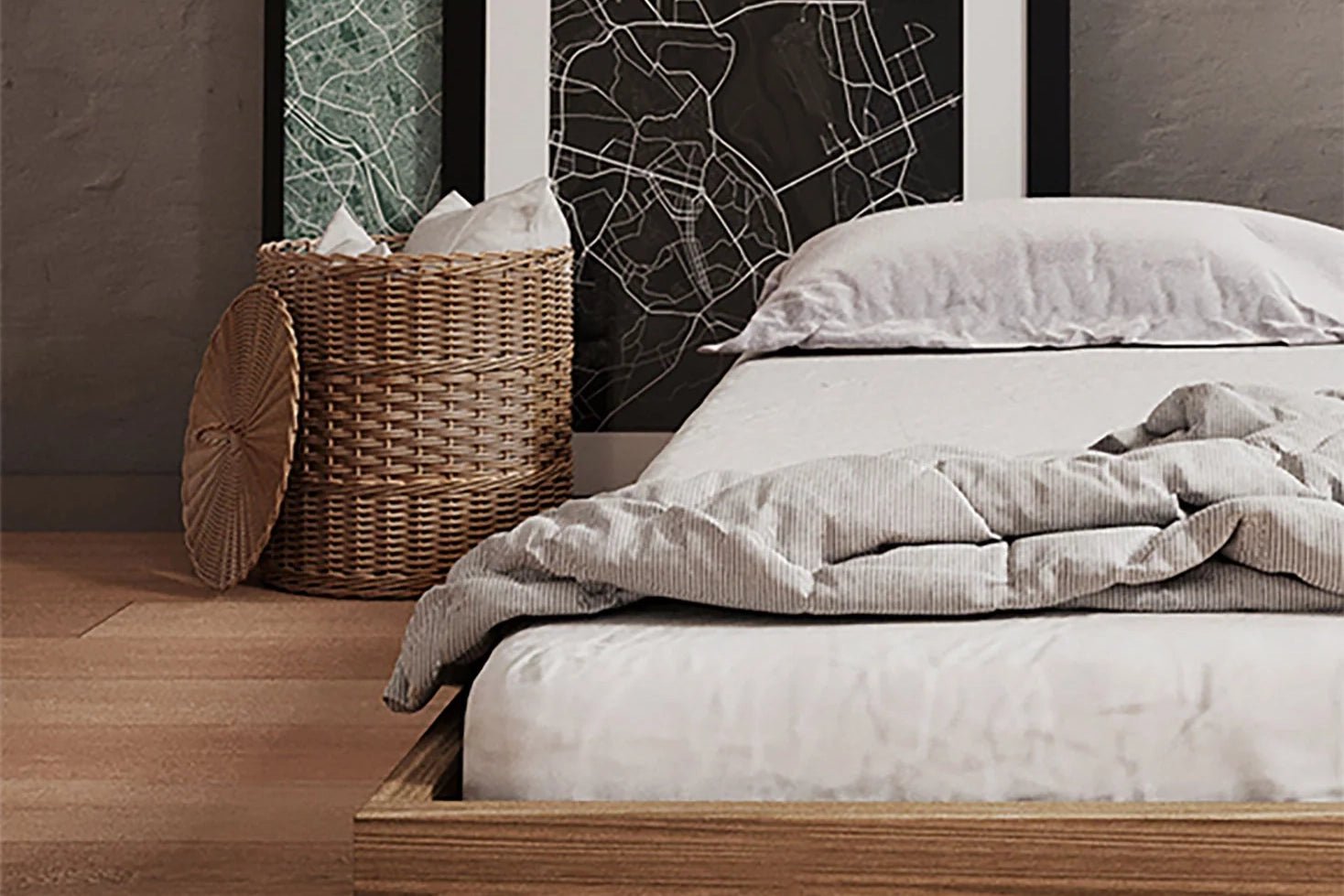
Organic Bedding Guide: Allergy-Friendly Comfort with Wool and Cotton (What to Choose & Why)
Share
Breathable, clean, and genuinely comfortable bedding starts with natural materials. If you’ve ever woken up stuffy, overheated, or itchy, it may be your bedding—not just your mattress. Organic fibers like wool and cotton create a calmer, drier sleep surface that resists common irritants and helps regulate temperature year-round. In this guide, we explain what “organic bedding” really means, compare wool vs cotton for different sleepers, and show how to build an allergy-friendly bedding setup that feels as good as it is for your health.
What Is Organic Bedding (and Why It Matters)
Organic bedding is made from fibers grown and processed without harmful pesticides or harsh chemical finishes, then verified by independent standards such as GOTS and OEKO-TEX. The result is fabric that’s naturally breathable, kinder to sensitive skin, and less likely to off-gas. For many homes—especially with allergies, asthma, or chemical sensitivities—organic bedding is a simple way to improve air quality and comfort without changing your entire sleep setup. If you’re also evaluating your mattress, this primer on safer core materials is a helpful companion read: non-toxic mattress tips.
Allergy-Friendly Bedding: What Actually Helps
Dust mites thrive where warmth and moisture collect. Natural fibers help in two ways: they breathe so moisture doesn’t linger, and many are naturally inhospitable to mites and mildew when kept dry. Wool, in particular, manages humidity exceptionally well and can be sun-refreshed outdoors. Cotton adds airy softness and easy care. Together, they create a sleep surface that feels clean by design—no heavy chemical treatments required.

Wool vs Cotton Bedding: Which Is Better for You?
Both are excellent—just in different ways. Use this quick comparison to match the fiber to your needs. Many sleepers layer the two for the best of both worlds.
| Feature | Organic Wool | Organic Cotton |
|---|---|---|
| Temperature | Balances heat and moisture; feels cozy yet avoids overheating across seasons. | Cool, airy handfeel; great in warm climates and for naturally hot sleepers. |
| Allergy support | Naturally resists dust mites and mildew when kept dry; easy sun refresh. | Gentle on skin and hypoallergenic; benefits from good airflow and washability. |
| Feel | Lofty, softly supportive; adds cushioned comfort without sink. | Smooth, crisp, breathable; ideal for sheets and light layers. |
| Best uses | Comforters, mattress pads, protectors for humidity control and year-round balance. | Sheets, duvet covers, light quilts; blends beautifully with wool fillings. |
| Care | Airing and spot care; some pieces are machine-washable (check product details). | Generally machine-washable; simple, low-maintenance routine. |
Practical Picks (By Need)
- Run warm or live humid: choose a breathable wool comforter such as a light wool comforter for summer and a year-round wool comforter for cooler months.
- Skin-sensitive or eczema-prone: start with organic cotton sheets, then add a breathable wool mattress pad to keep the micro-climate dry.
- Need support for cleanliness and longevity: protect your setup with a washable wool mattress protector that shields from spills while preserving breathability.
- Prefer a softer, cozy head feel: consider an organic wool pillow that stays drier and more temperature-balanced than many synthetic fills.
What Goes Into an Allergy-Free Bedding Setup
Think in layers: sheets for direct skin comfort, a breathable pad or protector to manage moisture and keep the sleep surface fresh, and a duvet or comforter that matches your climate. Choose materials first, then weights. For many homes, a mid-weight wool comforter covers most of the year; in peak summer, swap to a lighter fill while keeping cotton sheets and a thin wool pad for humidity control. If your mattress sleeps warm, a breathable surface layer can make a surprising difference before you change the bed itself.
Real-World Benefits You Can Feel
- Calmer air, clearer mornings: natural fibers reduce the warm, humid pocket where allergens thrive.
- Fewer night sweats: wool moves vapor before it condenses, so bedding feels dry and steady through temperature swings.
- Comfort that lasts: quality natural fillings keep their loft and structure longer than many synthetic fills.
- Low-maintenance freshness: sun-airing wool layers seasonally is often enough to keep them feeling new.

How to Choose Organic Bedding (Step-by-Step)
- Start with sheets: choose certified organic cotton in a percale or sateen weave depending on feel (percale = crisp and cool; sateen = a little silkier). See: organic cotton sheet set.
- Add a breathable pad or protector: for humidity control and everyday cleanliness, consider a wool mattress pad and a washable wool mattress protector.
- Select your comforter weight: match loft to your climate; wool fills buffer temperature better across seasons than most synthetics. Options include an organic wool comforter and a lighter organic wool light comforter.
- Mind sensitivities: look for transparent material lists and third-party certifications (GOTS, OEKO-TEX) rather than marketing terms alone.
Recommended Natural Layers
- Shop organic bedding collection — curated natural sheets, comforters, pillows, protectors, and pads.
- Organic cotton sheets — breathable surface feel for sensitive skin.
- Light wool comforter — balanced warmth for warmer months and hot sleepers.
- All-season wool comforter — steady temperature control across cooler months.
- Wool mattress protector — washable protection that stays breathable.
- Wool mattress pad — gentle cushioning with humidity control.
- Organic wool pillow — drier, more temperature-stable head support.
Care & Longevity (Simple, Sustainable)
Wash organic cotton sheets regularly with mild, fragrance-free detergent and dry on low; skip heavy fabric softeners that can reduce breathability. For wool layers, follow the product’s care label—many pads and some protectors or comforters are machine-washable; others prefer spot care and seasonal sun-airing to refresh loft and neutralize odors naturally. Rotate or fluff lofted pieces a few times per year and store in breathable cotton bags during off-season to protect fibers without trapping moisture.
FAQ: Organic, Wool & Cotton Bedding
Is wool too warm for summer?
Good wool bedding often sleeps cooler because it moves vapor before it condenses, helping you stay dry and comfortable even on humid nights.
What certifications should I look for?
GOTS certifies organic fiber content and safer processing for cotton and wool textiles; OEKO-TEX tests finished textiles for harmful substances. Both help you verify what’s in contact with your skin.
What if I’m sensitive to textures?
Choose organic cotton sheets for the surface feel you love, then let wool handle humidity management in pads, protectors, or comforters without touching your skin directly.
Ready to breathe easier at night? Build your setup with a few thoughtful, natural layers. Explore our organic bedding, add breathable cotton sheets, a washable wool pad and protector, and the right comforter weight for your climate. Enjoy a sleep environment that stays calm, dry, and comfortable—season after season.











